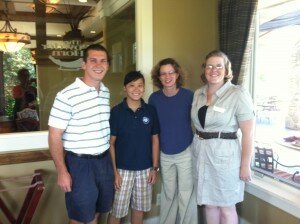 Imagine that you are driving down the road with your dog in the back, minding your own business when you find yourself being followed by a woman who parks when you park, then jumps out of her car, races to your side and starts talking about the difference you can make by contributing to the local animal shelter.
Imagine that you are driving down the road with your dog in the back, minding your own business when you find yourself being followed by a woman who parks when you park, then jumps out of her car, races to your side and starts talking about the difference you can make by contributing to the local animal shelter.
Margie Taylor, chair of the Sheridan, Wyoming Land Trust, told me all about this stalker-cum-volunteer enthusiast, describing her as positively undaunted in her pursuit of resources for the local animal shelter. She believed that everyone who had a pet, was a natural contributor to the shelter and she had the boldness to make the ask. I discovered in Sheridan, an impressive group of citizen leaders who had learned to ask their fellow citizens to contribute, to participate, and to help in a great variety of ways.
Sheridan is a town of 18,000 citizens in Northern Wyoming at the foothills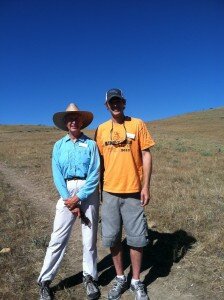 of the Bighorn Mountains. I visited my friends Michelle Sullivan and Brian Kuhl, who, along with other residents, have made a thoughtful choice to plant roots in Sheridan and raise their families. I guess you don’t end up here by accident.
of the Bighorn Mountains. I visited my friends Michelle Sullivan and Brian Kuhl, who, along with other residents, have made a thoughtful choice to plant roots in Sheridan and raise their families. I guess you don’t end up here by accident.
As I sat around the table with leaders of the Sheridan Community – representing Habitat for Humanity, The Land Trust, the Scott Foundation, The Center for Community Creation – I asked them what makes a city like Sheridan thrive, retain and attract new generations of leaders, and maintain its civic dynamism.
One person mentioned a sense of accountability to one another: “When you live in a small community, you know that if you don’t do it, nobody else will either.” Another said that folks tended to gather at the local YMCA, which then became a place to get things organized. Several people mentioned either approaching others or being approached themselves while wrapped in towels after a workout – evidently a good time to make the ask!
 I was fully attired on a recent Saturday morning, when I joined 150 volunteers in my first-ever Human Cattle Drive (alternatively called the Trail Trudge, Tromp or Trollop) to help break in a gorgeous new 12-mile trail created by the Sheridan Land Trust with help from cooperative private land owners. Families and neighbors alternatively tromped and visited with friends as they tamped down the path that the community will enjoy for decades to come.
I was fully attired on a recent Saturday morning, when I joined 150 volunteers in my first-ever Human Cattle Drive (alternatively called the Trail Trudge, Tromp or Trollop) to help break in a gorgeous new 12-mile trail created by the Sheridan Land Trust with help from cooperative private land owners. Families and neighbors alternatively tromped and visited with friends as they tamped down the path that the community will enjoy for decades to come.
A Serve Wyoming VISTA leader, Jamie Ostermyer, helped organize the Tromp recruiting dozens of volunteers. Everywhere I have visited, there are AmeriCorps members working with energy and enthusiasm to make things happen. Amy Strauss and Alex Selig, AmeriCorps volunteers were making magic at the YMCA creating tutoring and enrichment programs.
My next stop was quite a change of pace. I visited the Green House – a new long-term care facil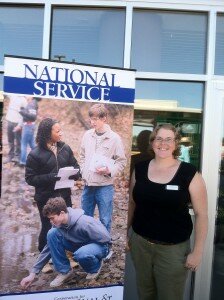 ity for elders that’s breaking the mold. The Green House Living movement, a care model for elders that throws out much of the institutional culture of nursing homes and embraces a home-like environment, inspired two local volunteers to get moving.
ity for elders that’s breaking the mold. The Green House Living movement, a care model for elders that throws out much of the institutional culture of nursing homes and embraces a home-like environment, inspired two local volunteers to get moving.
Carman Rideout, Executive Director of the Senior Center, and one of the volunteer founders of the Green House told me about the moment when the idea of a new kind of care was introduced. A handful of fellow volunteers literally jumped up and down, declaring, “We can do this!” They needed every bit of that enthusiasm as they worked for six years to raise over $3 million, battle skepticism and bureaucracy, and hold onto the vision of what was possible.
I saw a small collection of homes, each with 12 residents, and felt a real spirit of compassionate care along with the encouragement to live full lives. The Green House model is spreading around the country, but Sheridan’s is the only independent, volunteer-driven center. I expect it to influence the principles and expectations of care throughout Wyoming.
At my last stop in Sheridan, I met a group of leaders that included Arin Waddell. Arin was moved by a story and the passion of a friend who wanted to help kids fight hunger after she discovered her daughter filling her pockets with food every morning to share on the bus to school. Arin and her friends came up with a plan to make sure children weren’t going hungry over the weekends. Today children in need can pick up one of The Food Group’s backpacks, full of nourishing food, at school, no forms or names needed.
But it wasn’t always easy. As the program grew, the group was approached about the need to feed 48 more children. They didn’t know how to say  no, but they had no way of saying yes – they had no additional capacity. And then a local plumber, who had seen a flier about the program (posted by Arin’s hairdresser), stepped forward. He organized a group of plumbers, welders and workmen, who took care of the entire cost. Within a year, The Food Group was sending nourishing meals home with 248 children each week.
no, but they had no way of saying yes – they had no additional capacity. And then a local plumber, who had seen a flier about the program (posted by Arin’s hairdresser), stepped forward. He organized a group of plumbers, welders and workmen, who took care of the entire cost. Within a year, The Food Group was sending nourishing meals home with 248 children each week.
Arin described building up her courage to ask people to help – to ask restaurants to donate food, a local band to donate its talents, and volunteers to hold a fundraiser (they raised $18,000 right out of the gate). She discovered that in asking, she issued an invitation for participation and inclusion that people were happy to accept.
As I discovered anew in Sheridan, a growing circle of asking and responding is an essential part of building a vibrant community. In this vital exchange, we nourish one another in ways both physical and spiritual. One key question for all of us is, how do we broaden the circle of civic leaders- those who lead and ask others to serve?
The real secret behind strong civic leadership? Quite simply, the power and courage to ask.
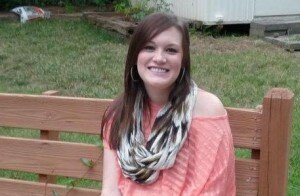 Today’s blog post was written by Luci Miller, an AmeriCorps National Direct member at Points of Light. Luci has served at Points of Light since October, 2011 and her last day of service is this Friday, August 31.
Today’s blog post was written by Luci Miller, an AmeriCorps National Direct member at Points of Light. Luci has served at Points of Light since October, 2011 and her last day of service is this Friday, August 31. in with my parents in Atlanta, Georgia.
in with my parents in Atlanta, Georgia. At the end of my term, I was able to put my skills into action, while planning the Points of Light staff volunteer project at the Atlanta Tool Bank. I engaged over 25 volunteers successfully. It was amazing to see the skills I have been developing all year come to life!
At the end of my term, I was able to put my skills into action, while planning the Points of Light staff volunteer project at the Atlanta Tool Bank. I engaged over 25 volunteers successfully. It was amazing to see the skills I have been developing all year come to life!
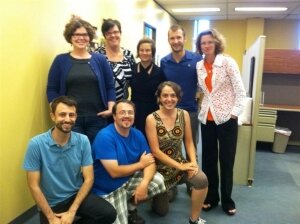
 nonprofit sector can create the strong, reliable, readily available matches every individual needs to kindle their civic leadership over a lifetime.
nonprofit sector can create the strong, reliable, readily available matches every individual needs to kindle their civic leadership over a lifetime.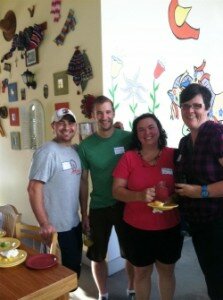 All of these higher education leaders were struggling to ensure high quality and depth in their offerings, while including the broadest possible spectrum of students. They were grappling with both the increasing costs of college and how to fully integrate national service resources into the community college or university experience. They raised the question of how we might include service as a way to reduce student debt.
All of these higher education leaders were struggling to ensure high quality and depth in their offerings, while including the broadest possible spectrum of students. They were grappling with both the increasing costs of college and how to fully integrate national service resources into the community college or university experience. They raised the question of how we might include service as a way to reduce student debt.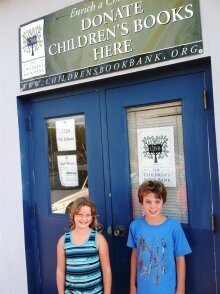
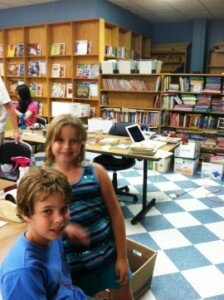 kids. The spark ignited a movement of caring families and volunteers. Portland is full of civic vitality and sparks that have been nurtured into bold flames of leadership and citizen engagement. How can we help provide the civic networks and support systems that form the sturdy matches of ignition and light to propel Emily, Eric and Dani?
kids. The spark ignited a movement of caring families and volunteers. Portland is full of civic vitality and sparks that have been nurtured into bold flames of leadership and citizen engagement. How can we help provide the civic networks and support systems that form the sturdy matches of ignition and light to propel Emily, Eric and Dani? Imagine that you are driving down the road with your dog in the back, minding your own business when you find yourself being followed by a woman who parks when you park, then jumps out of her car, races to your side and starts talking about the difference you can make by contributing to the local animal shelter.
Imagine that you are driving down the road with your dog in the back, minding your own business when you find yourself being followed by a woman who parks when you park, then jumps out of her car, races to your side and starts talking about the difference you can make by contributing to the local animal shelter. of the Bighorn Mountains. I visited my friends Michelle Sullivan and Brian Kuhl, who, along with other residents, have made a thoughtful choice to plant roots in Sheridan and raise their families. I guess you don’t end up here by accident.
of the Bighorn Mountains. I visited my friends Michelle Sullivan and Brian Kuhl, who, along with other residents, have made a thoughtful choice to plant roots in Sheridan and raise their families. I guess you don’t end up here by accident. I was fully attired on a recent Saturday morning, when I joined 150 volunteers in my first-ever Human Cattle Drive (alternatively called the Trail Trudge, Tromp or Trollop) to help break in a gorgeous new 12-mile trail created by the Sheridan Land Trust with help from cooperative private land owners. Families and neighbors alternatively tromped and visited with friends as they tamped down the path that the community will enjoy for decades to come.
I was fully attired on a recent Saturday morning, when I joined 150 volunteers in my first-ever Human Cattle Drive (alternatively called the Trail Trudge, Tromp or Trollop) to help break in a gorgeous new 12-mile trail created by the Sheridan Land Trust with help from cooperative private land owners. Families and neighbors alternatively tromped and visited with friends as they tamped down the path that the community will enjoy for decades to come. ity for elders that’s breaking the mold. The Green House Living movement, a care model for elders that throws out much of the institutional culture of nursing homes and embraces a home-like environment, inspired two local volunteers to get moving.
ity for elders that’s breaking the mold. The Green House Living movement, a care model for elders that throws out much of the institutional culture of nursing homes and embraces a home-like environment, inspired two local volunteers to get moving. no, but they had no way of saying yes – they had no additional capacity. And then a local plumber, who had seen a flier about the program (posted by Arin’s hairdresser), stepped forward. He organized a group of plumbers, welders and workmen, who took care of the entire cost. Within a year, The Food Group was sending nourishing meals home with 248 children each week.
no, but they had no way of saying yes – they had no additional capacity. And then a local plumber, who had seen a flier about the program (posted by Arin’s hairdresser), stepped forward. He organized a group of plumbers, welders and workmen, who took care of the entire cost. Within a year, The Food Group was sending nourishing meals home with 248 children each week.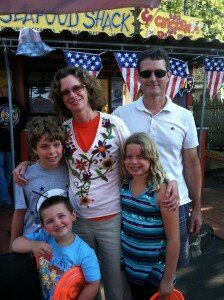 Buffalo was a terrific place to begin our journey across the country to visit with volunteers and citizen innovators. I met with community activists, AmeriCorps members and Alums who are driving civic change in Buffalo with their energy and idealism.
Buffalo was a terrific place to begin our journey across the country to visit with volunteers and citizen innovators. I met with community activists, AmeriCorps members and Alums who are driving civic change in Buffalo with their energy and idealism.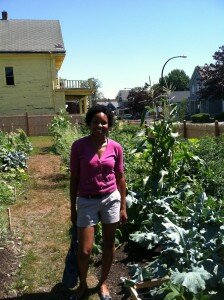 percentage of the jobs retrofitting houses employ community members. Buffalo has one of the nation’s highest rates of home vacancies. A renaissance in Buffalo depends upon citizens banding together to create new approaches to economic development and healthier forms of community. This initiative is a really interesting model of authentic community organizing combined with new green approaches to economic development. It will be fascinating to see how PUSH develops in both its Green Development Zone and in its broader advocacy efforts to influence legislation and systems.
percentage of the jobs retrofitting houses employ community members. Buffalo has one of the nation’s highest rates of home vacancies. A renaissance in Buffalo depends upon citizens banding together to create new approaches to economic development and healthier forms of community. This initiative is a really interesting model of authentic community organizing combined with new green approaches to economic development. It will be fascinating to see how PUSH develops in both its Green Development Zone and in its broader advocacy efforts to influence legislation and systems.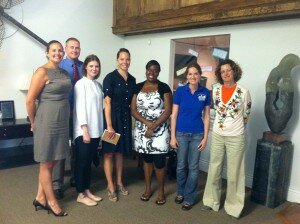
 an
an 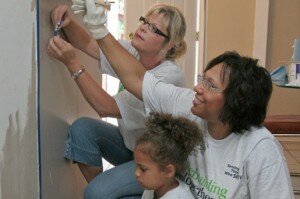 I’d like to share with you a few things I’ve learned over my term so far.
I’d like to share with you a few things I’ve learned over my term so far. service will be felt long after we have left. During “AmeriCorps Works” week, I invite you to think back and remember your own “aha!” moment. What is your purpose and direction in the service field? How do you feed the need to impact others in a positive way? Take some time to refocus on that moment and the resulting actions; it can only increase your commitment to service!
service will be felt long after we have left. During “AmeriCorps Works” week, I invite you to think back and remember your own “aha!” moment. What is your purpose and direction in the service field? How do you feed the need to impact others in a positive way? Take some time to refocus on that moment and the resulting actions; it can only increase your commitment to service!
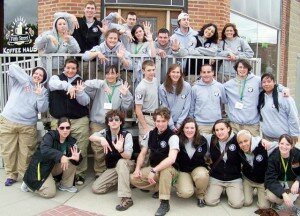 current place of employment to show the diversity in career paths and leadership rules pursued after AmeriCorps. You can share these pictures through AmeriCorps Alums social media with the hashtag #AmeriCorpsWorksHere.
current place of employment to show the diversity in career paths and leadership rules pursued after AmeriCorps. You can share these pictures through AmeriCorps Alums social media with the hashtag #AmeriCorpsWorksHere.
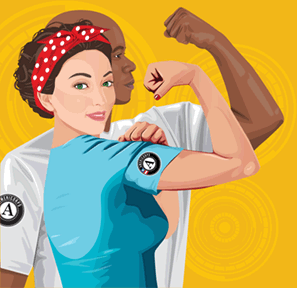 will take place Tuesday, March 13 from 3 to 4:30 PM ET. Participate in this
will take place Tuesday, March 13 from 3 to 4:30 PM ET. Participate in this 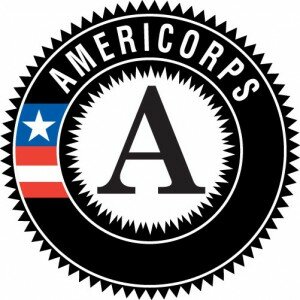 Hooray, hooray! Happy AmeriCorps Week everyone! Let’s kick off the week by explaining what exactly AmeriCorps is, in case you still do not know.
Hooray, hooray! Happy AmeriCorps Week everyone! Let’s kick off the week by explaining what exactly AmeriCorps is, in case you still do not know.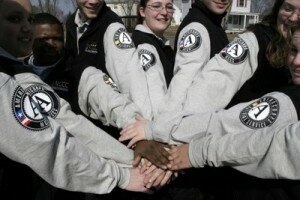 intensive service in community programs. Members have the opportunity to serve in a variety of agencies including faith-based, community organizations, higher education, and public agencies. Their goals are to raise awareness in the fields of education, environment, public safety, and health. They engage in direct service such as after-school tutoring, volunteer recruitment, and capacity building.
intensive service in community programs. Members have the opportunity to serve in a variety of agencies including faith-based, community organizations, higher education, and public agencies. Their goals are to raise awareness in the fields of education, environment, public safety, and health. They engage in direct service such as after-school tutoring, volunteer recruitment, and capacity building.
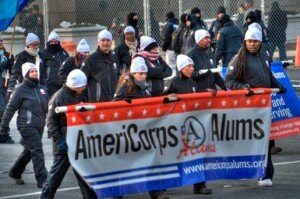 Civilian Community Corps. Their goal is to strengthen communities, while building leaders out of team service. NCCC members focus on aiding national crises.
Civilian Community Corps. Their goal is to strengthen communities, while building leaders out of team service. NCCC members focus on aiding national crises.
 Specialist for HandsOn University.
Specialist for HandsOn University.


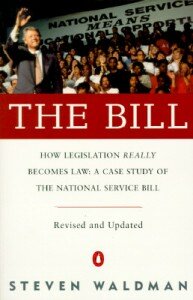


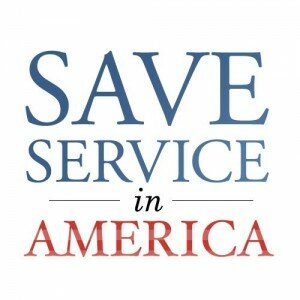 Today, supporters of national service programs across the country are coming together to bring awareness of the importance of national service programs like
Today, supporters of national service programs across the country are coming together to bring awareness of the importance of national service programs like 
